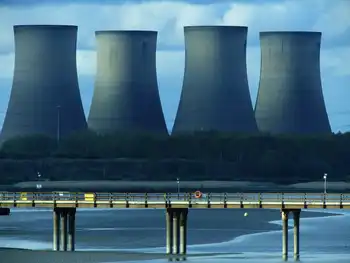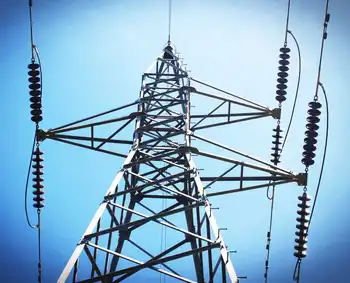A mighty wind – the government’s plans for wind farms
UNITED KINGDOM - With jobs disappearing, shares nosediving and projects being mothballed, it would take something special to cheer the construction industry up at the moment. Something like the creation of tens of thousands of jobs through a £60 billion development programme, for instance.
That’s the formidable scale of the government’s offshore wind farm plan – part of its 12-year, £100bn renewables programme – which will lead to 3,000 vast offshore wind turbines, each with blades the length of football pitches, appear along our coastline.
When the wind blows, a single turbine will be able to produce between 3MW and 5MW an hour – enough to meet the electricity demands for almost 2,000 homes. No wonder wind power evangelists such as Mark Whitby, chair of engineer Ramboll Whitbybird, are describing the wind revolution as the “biggest thing in building”.
The UK is already overtaking Denmark as the biggest producer of wind energy in the world and the British Wind Energy Association (BWEA) estimates that the country will get as much power from wind as it does from nuclear within five years. The government is under an EU obligation to generate 15% of its energy from renewable sources by 2020, after which it will be fined year on year for each megawatt missed.
This is heartening news for the construction industry, particularly when project values are in the order of £2.5m per MW of capacity. For instance, Greater Gabbard in Suffolk, which is set to become the world’s largest offshore wind farm when it is completed in 2010, has a capacity of 500MW per hour, so could cost up to £1.25bn. Seventy per cent of the cost of a wind farm goes towards buying the actual turbines and the rest on the civil and electrical engineering and project management that is required to design the blades and the foundations, among other things.
On top of this, there are big holes in the supply chain, so the government predicts that a huge number of jobs will be created. It is easy to see why Whitby, who plans to build a 50-strong offshore wind team by 2010, is aglow. “It’s phenomenal,” he says. “We’re talking about a £5bn-a-year industry.”
Others are less enthusiastic. They say wind is unreliable, as it does not blow all the time, and that wind farms are a distraction from nuclear power. Regardless of these concerns, however, offshore wind farming is pressing ahead on a scale as big as the turbines.
Opportunities in this sector range from manufacturing blades and engines and designing foundations, to building infrastructure in ports and harbours and connecting the turbines to the national grid.
The ultimate client is the Crown Estate, which owns BritainÂ’s seabed, but wind farms are developed by private energy companies such as EDF and Centrica, which have to apply for licences in bidding rounds. The third and largest of these was launched in June.
Consent for the next phase of farms will be needed by 2013 and construction must begin by 2014 if they are to produce energy quickly enough to meet government targets.
Projects so far have been individually led but it is thought that future schemes will be handled by consortiums because of the scale of the proposed development – 25GW per hour (about 20 times the output of Sizewell B) compared with 7.2GW for round two. “Even the likes of E.ON and Npower are talking about partnership approaches to share some of the risk and financial burden,” says James Smith, regional director at consultant Faber Maunsell, which is hoping to get involved. For the first time, the Crown Estate has also said it will meet up to half of pre-construction development costs.
Proposals have to be submitted in the first quarter of 2009, after which energy companies are expected to appoint consultants to support the bidding process and manage feasibility studies.
There are currently a few specialist companies such as Hampshire-based PMSS, which has provided services including safety management and environmental impact assessment for projects such as Airtricity’s £800m Greater Gabbard scheme. UK consultant Garrad Hassan is the market leader in wind engineering, despite only having a couple of hundred staff.
Bigger firms on the scene include Ramboll Whitbybird, which is involved in all the round-two projects, doing everything from foundation assessments to blade design, as well as a $1.6bn (£800m) scheme in Delaware in the US. Mott MacDonald, which is working on a dozen projects across northern Europe, has carved out a niche in advising banks on project finance deals. Others, such as Atkins, have dabbled in offshore wind but not yet made it a core business.
Contractors are usually appointed after planning permission is secured and those with oil and gas experience, such as Fugro Seacore and Fluor, have so far dominated the sector. Sir Robert McAlpineÂ’s Renewable Energy Systems also runs a 200-strong team, developing, installing and providing consultancy around the world.
Companies with a track record from the first two development rounds are in the best position to take advantage of the boom, but the scale of the programme means there is room for many more players. Adrian Fox, a director at Arup Energy, says: “People are crying out for experts. If you are a start-up company and can offer the appropriate skills, there’s no reason why you shouldn’t be able to break in to the market.”
Marine experience is the most valuable attribute, according to Simon Harrison, energy director at Mott MacDonald. “These things are just offshore projects that happen to have wind turbines on them,” he says. Duncan Ayling, head of offshore at the British Wind Energy Association (BWEA), agrees: “Any companies that have been operating offshore, whether for oil and gas or telecoms or fisheries, are going to be in a good position.”
The best way to get involved is simply to talk to energy companies and make sure you are on their bidding list, adds Harrison. Much remains to be hammered out on the tendering side – in the past, design-and-build contracts have dominated, but this could change. “The jury’s still out,” he says. “There’s a feeling we are moving away from turnkey. It’s no longer credible for owners to go to suppliers and say, ‘Take all this risk off my hands please’.” For architects, and non-sea-faring contractors, there will be smaller projects on land – such as building the factories that make the turbines.
The market sounds rosy, but it has its challenges. Scheduling can be difficult as teams have to wait for suitable “weather windows” and in winter, very little gets done.
“There is often uncertainty about when you can finish a project,” says Ayling. “People are careful to say, ‘We hope to finish in 2008’, rather than, ‘We hope to finish in August’. It’s a bit of a risk to put your finger on a date.” As a result, teams have to be prepared to work on several projects at the same time.
And just because it’s offshore, that doesn’t mean there aren’t protesters to deal with. Fierce opposition comes from fishermen and watersports enthusiasts. “It’s a dimension we have to take into account as consultants,” says James Smith. “Many of the opponents are well organised, well financed and well educated.”
This can be a bit of a headache for developers. Danish energy company Dong Energy had to agree to further investigations into the impact of a scheme near Clacton-on-Sea on fishing, following a meeting with lobster fishermen in April. In Porthcawl, south Wales, surfers are calling for a development to be scrapped.
But the BWEA says protests will weaken as communities wake up to the benefits of wind farms – the head of the docks near the Inner Dowsing farm turned his ailing business around off the back of offshore wind vessels. Also, if approved by the House of Lords, the Planning Bill should limit the impact of protests by fast-tracking large infrastructure projects through the planning process.
The expense of offshore operations has also raised eyebrows – it is almost twice as expensive to build wind farms at sea than on land. In May, Shell withdrew from the £2bn Thames Array project, blaming soaring costs and a bottleneck in equipment supply.
Turbine supply is a serious issue at the moment, with a waiting list of at least a year. But positive signs include talk of more manufacturers setting up shop in the UK, which would increase supply and cut transport costs. And in July, energy minister Malcolm Wicks opened a renewable energy centre in Northumberland, where US company Clipper Wind is developing the worldÂ’s tallest turbine, set to be 10 times higher than the Angel of the North.
So perhaps Whitby had a point when he said this was the biggest thing in building.
Related News

German renewables deliver more electricity than coal and nuclear power for the first time
BERLIN - In Lippendorf, Saxony, the energy supplier EnBW is temporarily taking part of a coal-fired power plant offline. Not because someone ordered it — it simply wasn't paying off. Gas prices are low, CO2 prices are high, and with many hours of sunshine and wind, renewable methods are producing a great deal of electricity. And in the first half of the year there was plenty of sun and wind.
The result was a six-month period in which renewable energy sources produced more electricity than coal and nuclear power plants together. For the first time 47.3% of the electricity consumers used…




